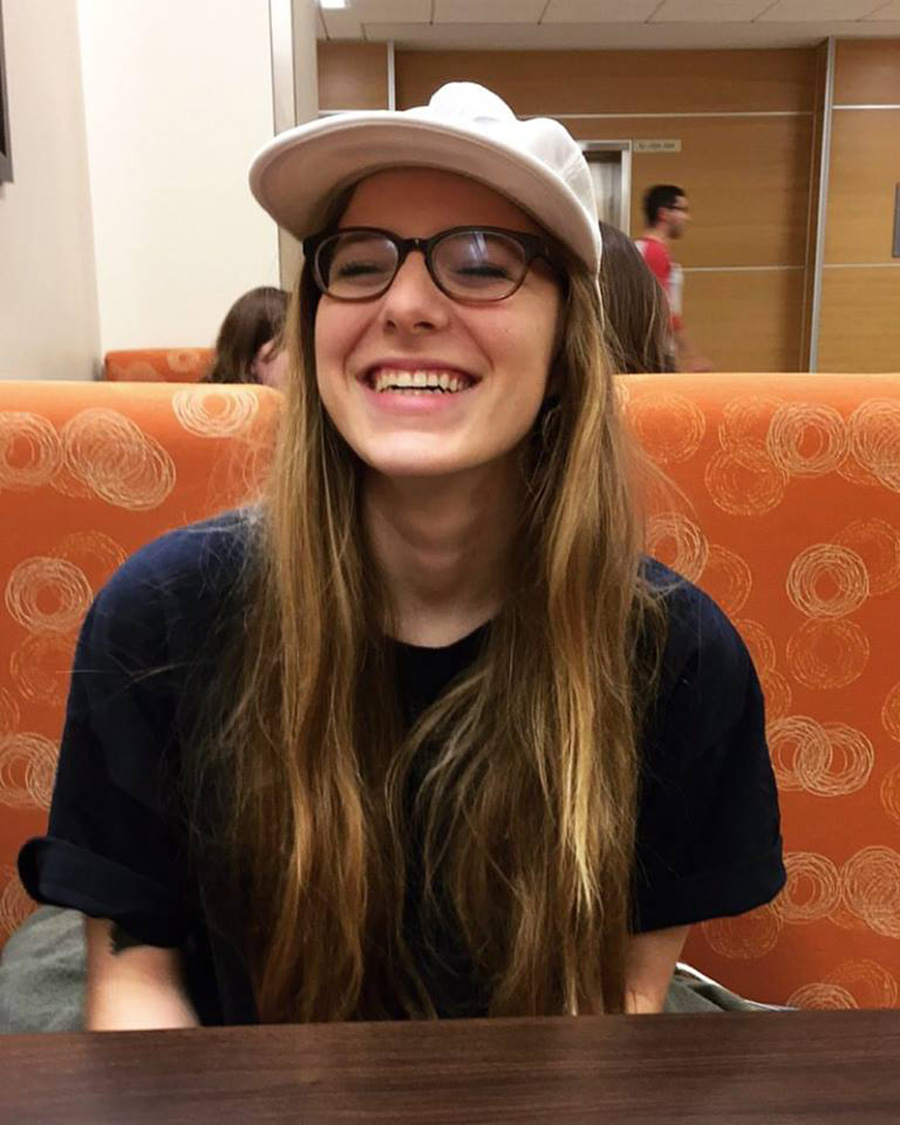By Emma Walsh
Let’s be honest for a second: having no community sucks. I was going to try to make that sound more eloquent and literary, but I think the bluntness of it gets across what I mean more than any metaphor could. It sucks.
Having no community, no representation, no support, no clue about bisexuality (my own or otherwise) is what caused me so much angst and anxiety when I was closeted. I was closeted for years without even knowing because I didn’t know that a person could be bisexual. And being closeted, but not knowing you’re closeted, is a very strange feeling.
In those days, it was like looking in the mirror with no glasses on; everything was always blurry and out of focus. There was something there that was making me uncomfortable, but it was unidentifiable and therefore I couldn’t deal with it. I was always anxious and confused about the indistinguishable part of me I couldn’t see. That eventually became the normal way to see myself; I didn’t have anyone there to tell me that life didn’t have to be that way. No community and no support meant no way for me to even identify what was making me so anxious all the time, which resulted in a lot of headaches, stumbling and confusion, for years.
I did, however, see people on television and in the media, but I only saw them in black and white. I saw straight people, straight characters, gay people, gay characters and gay culture. There’s straight or gay. That’s it. I knew that I wasn’t gay. I wasn’t sure if I was straight. But if I wasn’t either of those, then what was I? Is there something wrong with me? became an everyday thought.
I was searching through everything possible to find something else I could be, but the ‘B’ of LGBT wasn’t really there. It’s like having a TV antenna and no matter how much it’s moved around or adjusted, that damn channel just ain’t going to work. I just didn’t know about bisexuality because I had never seen it or heard it. While simultaneously fantasizing about dating either Emma Watson or Patrick Dempsey (it was the golden era of Grey’s Anatomy and Harry Potter), I thought to myself “I’m straight because I’m not a lesbian.”
Where was a community, my community, to slap some sense into me? To inform me that the world is a rainbow of colors and not just the black and white we see on our television screens or in our newspapers?
Apparently, for me it was on the Internet. For years I saved up for my first computer, mostly because I really wanted to be able to play Sims 3. Once I discovered that computers can do more than just play super sick games like Sims and Club Penguin, I was absolutely hooked. I proudly embodied the millennial stereotype: I constantly wrotethings on my blog and posted politically charged articles on my Facebook, all while sitting in a coffee shop wearing a beanie and Birkenstocks.
But it was when I discovered YouTube that things really changed for me. Suddenly, I found media that was made by every kind of person imaginable. There were videos about everything: how to do laundry, what being vegan means, someone making weird sounds for 15 minutes, people playing video games, political discussions, news reports, how to pierce your own bellybutton and millions more. The people on YouTube weren’t just the people that advertising companies want to be shown in movies and shows. They weren’t the people on TV or in the paper. They were real people, diverse people.
And, boy, were there queer people. I found this genre of video called “coming out” videos, where people literally make a video of themselves coming out. At first, I wasn’t sure why I liked “coming out” videos so much. Thank god I’ll never have to do that, I would think, laughing nervously as I watched the YouTuber nowthisisliving come out as gay.
It was when I watched a bisexual coming out video that my world literally changed.
‘You can like more than one gender?’ I thought. That’s something that other people feel?
Then I watched another bisexual coming out video. And another. And another. And soon it was 4 a.m. and I had watched every single coming out video that had ever been posted to YouTube (or so it seemed).
I began commenting on the videos. I would ask a lot of questions: “Who can be bisexual?” “What does it mean to be bisexual?” “Is it normal to be bisexual?”And people actually replied. They were nicer, more informative and more supportive than anyone or anything I had experienced before. In the span of 12 hours, I had been shown bisexual representation, I learned what bisexuality was, that it was normal, and that there were people out there waiting to welcome other bisexuals with open arms. I might not have entirely accepted my own sexuality that night, but I was seeing myself more clearly than I ever had before. I was seeing myself in others and seeing that there was a community of people out there for me.
It took another couple of months for me to come out to myself and then to others, but without seeing myself clearly, seeing others like me, or having support from a community, I have no idea where I would be today. The LGBTQ+ community is an amazing one, but what I so desperately needed when I was unknowingly closeted was to see bi+ representation clearly and separately in order to identify and understand myself. In order to see and be proud of the rainbow that we all make, we each need our own color to be proud of.
Emma Walsh is studying Cell Biology and English Literature. She is passionate about feminism, veganism, reading, writing and playing board games.

